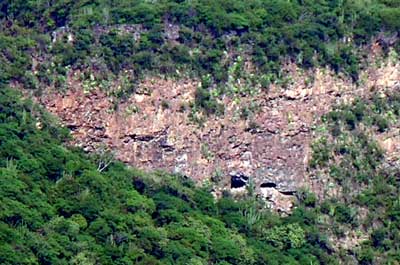
Zotz Trip Report
BAT STUDY LAUNCHED AT CUATA CAVE
Text and Pictures ©2009 By John Pint
At the urging of bat researcher Leonel Ayala, I organized a visit to Las Cuevas Cuata, nestled in the wall of Tequilizinta Bluff in Santa Rosa Canyon. Leonel has been teaching Cave Biology at the UDG for some time and is now beginning a new ;project aimed at identifying and monitoring bat populations in all the Jalisco caves he can get to. I told him the biggest bats I've ever seen in Jalisco were in Cuata Cave (wingspan of about 50 cm) and Leonel was immediately interested. Naturally, I didn't mention that the cave is slightly off the beaten track and you have to climb up to it on an exposed canyon wall 300 meters above the frothing (and filthy) Santiago River.
We headed for the cave on Sunday, October 11, 2009. In the expedition were Mario Guerrero, Memo, Rodrigo Orozco and Bicho, Rodrigo Esparza and Cyntia, Leonel and yours truly.
Because Mario was in the group, our first stop was, naturally, an Oxxo (=breakfast). After that, we drove straight to the new Mirador (Lookout Point) nine kilometers north of Amatitán. From here, in the morning light, you can clearly see Las Cuevas Cuata, far far away in the canyon wall.

The Double Entrances to Cuata Cave
Next, we drove to La Taberna and began the long hike to Tequilizinta. The moment we left the path to head to the cave, we crossed a wide area full of maleza (underbrush) and pesky rocks you could easily trip over. Here Rodrigo and Cyntia gasped. "Can't you see this is an archeological site?" they shouted, immediately pointing out various ancient constructions all around us. It sure is nice to have archeologists along on a caving trip!
New branches have been placed in front of La Madriguera de los Lobos (Wolves' Den Cave), making it easy to start the cliff-hanging walk up to Cuata.
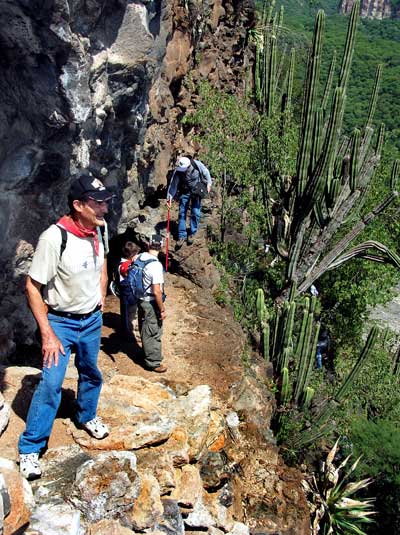
Real Cavers: Three Hundred Meters High and Cool as Cucumbers
Upon arrival, Mario and Bicho immediately located a geocache hidden here over two years ago. We had fun taking goodies out of the bottle and replacing them with new junk.
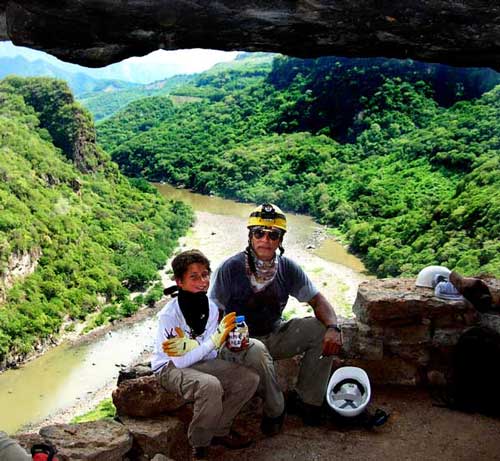
Bicho and Mario with Geocache Bottle. Note Fabulous View of Santiago River Below
Leonel then set up a net and in nothing flat caught a little bat which he identified as Balantiopteryx plicata, the Grey Sac-Winged Bat.
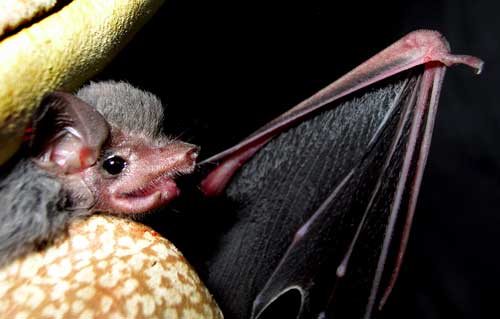
A big altar still stands in the entrance room of the cave and anyone who doesn't know the curious history of Cuata and Tequilizinta should read The Cave at the End of the World, in English or in Spanish at our Subterraneo site.
While Rodrigo and Bicho investigated the living creatures of the cave, Leonel and I crawled to the Black Lagoon (see Cuata Map) to take readings of the cave's water (78F) and air (27C) temperatures and humidity (81%). Along the way, we stopped to listen to normally inaudible bat sounds through a device which Leonel uses to help identify bats.
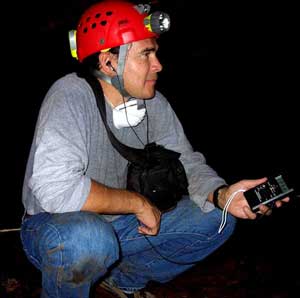
Leonel Ayala Eavesdropping on the Bats
In both of the cave's main passages we found remains of the original walls and ceiling of this lava tube. We saws lava stalactites up to four centimeters long, lava levees and lava dribbles.
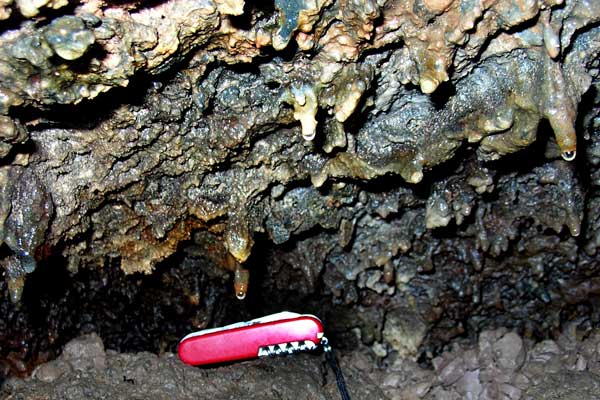
Lava Stalactites, Dripping due to High Humidity in Cave
This cave and the Wolves' Den immediately below it are the only lava tubes we have so far found in western Mexico.
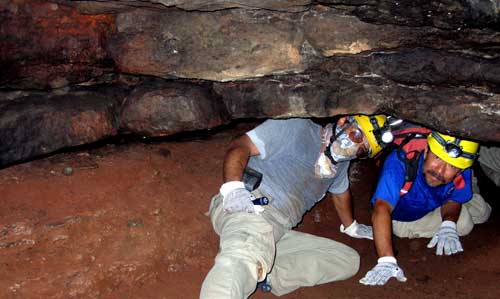
Two separate layers of lava can be seen here above Mario and Memo.
Curiously, few bats were seen in the cave, even though kilos of insect-eating bat guano has recently been deposited in the entrance room and fresh traces of vampire goo can be seen everywhere deeper inside the cave. And those big bats? Sorry, they didn't show. Nevertheless, Leonel's survey has been launched and we hope lots of useful information will result.
John Pint
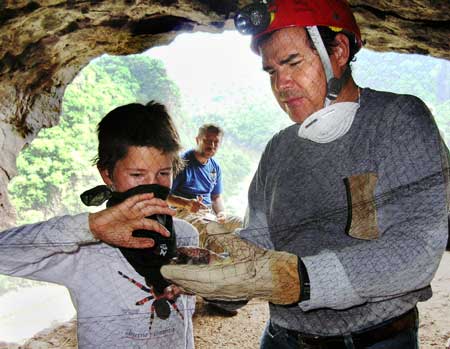
Bicho and Leonel with Net and Bat
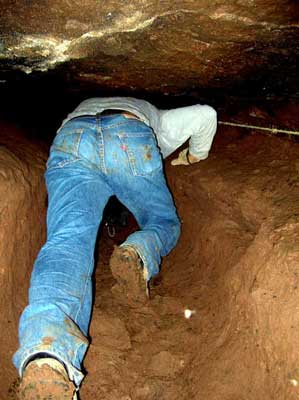
Typical View of Another Caver inside Cuata
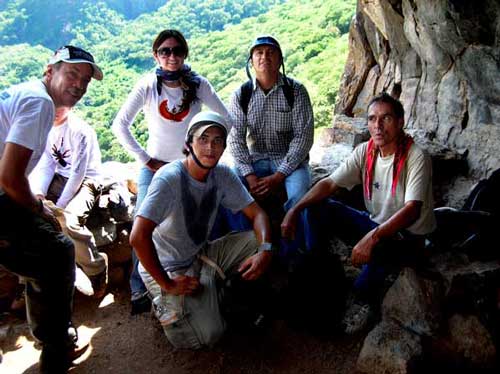
Cavers Breathing Fresh Air before Diving into Cave
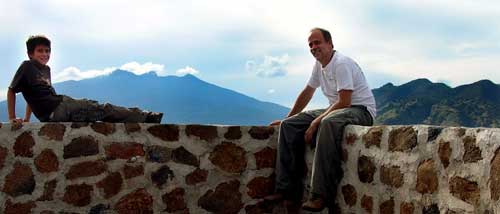
Bicho and Rodrigo Orozco in the Shadow of Tequila Volcano